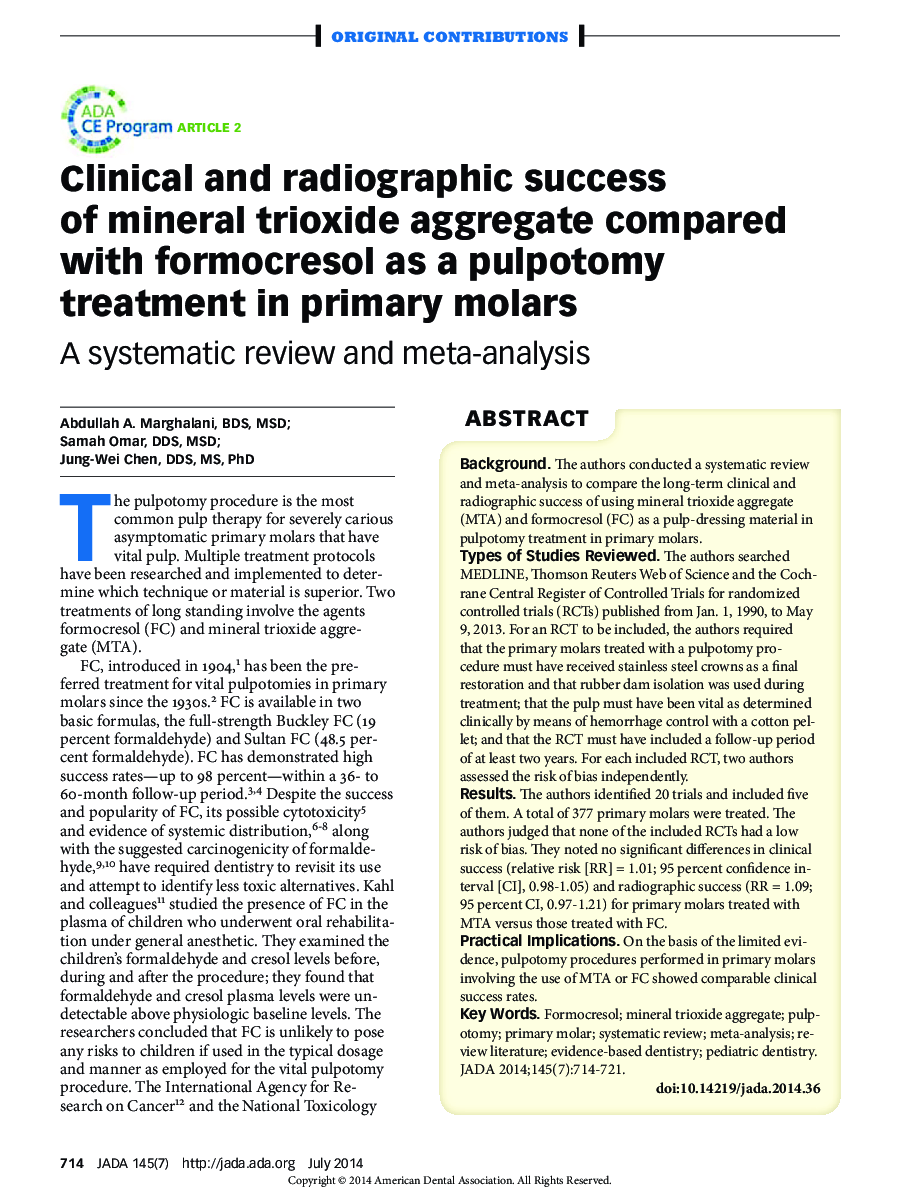| Article ID | Journal | Published Year | Pages | File Type |
|---|---|---|---|---|
| 3137005 | The Journal of the American Dental Association | 2014 | 8 Pages |
ABSTRACTBackgroundThe authors conducted a systematic review and meta-analysis to compare the long-term clinical and radiographic success of using mineral trioxide aggregate (MTA) and formocresol (FC) as a pulp-dressing material in pulpotomy treatment in primary molars.Types of Studies ReviewedThe authors searched MEDLINE, Thomson Reuters Web of Science and the Coch-rane Central Register of Controlled Trials for randomized controlled trials (RCTs) published from Jan. 1, 1990, to May 9, 2013. For an RCT to be included, the authors required that the primary molars treated with a pulpotomy procedure must have received stainless steel crowns as a final restoration and that rubber dam isolation was used during treatment; that the pulp must have been vital as determined clinically by means of hemorrhage control with a cotton pellet; and that the RCT must have included a follow-up period of at least two years. For each included RCT, two authors assessed the risk of bias independently.ResultsThe authors identified 20 trials and included five of them. A total of 377 primary molars were treated. The authors judged that none of the included RCTs had a low risk of bias. They noted no significant differences in clinical success (relative risk [RR] = 1.01; 95 percent confidence interval [CI], 0.98-1.05) and radiographic success (RR = 1.09; 95 percent CI, 0.97-1.21) for primary molars treated with MTA versus those treated with FC.Practical ImplicationsOn the basis of the limited evidence, pulpotomy procedures performed in primary molars involving the use of MTA or FC showed comparable clinical success rates.
